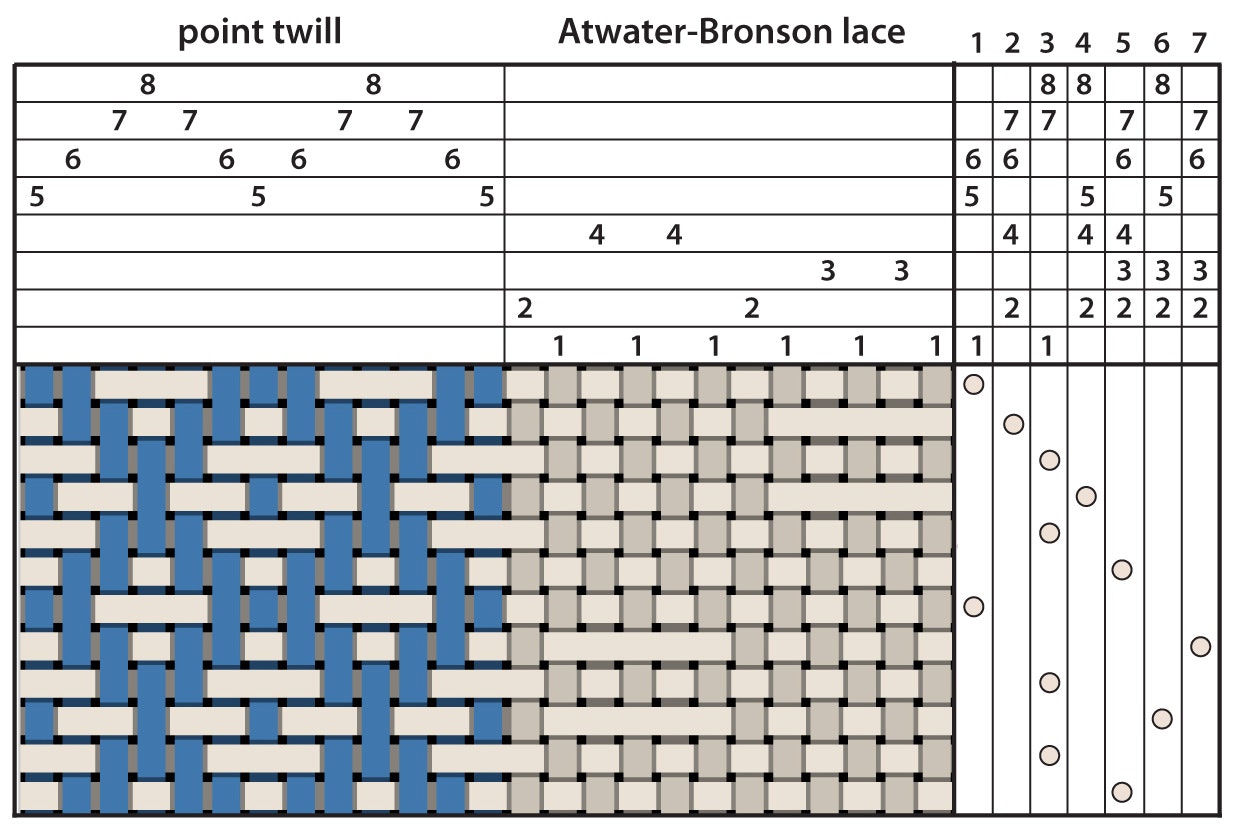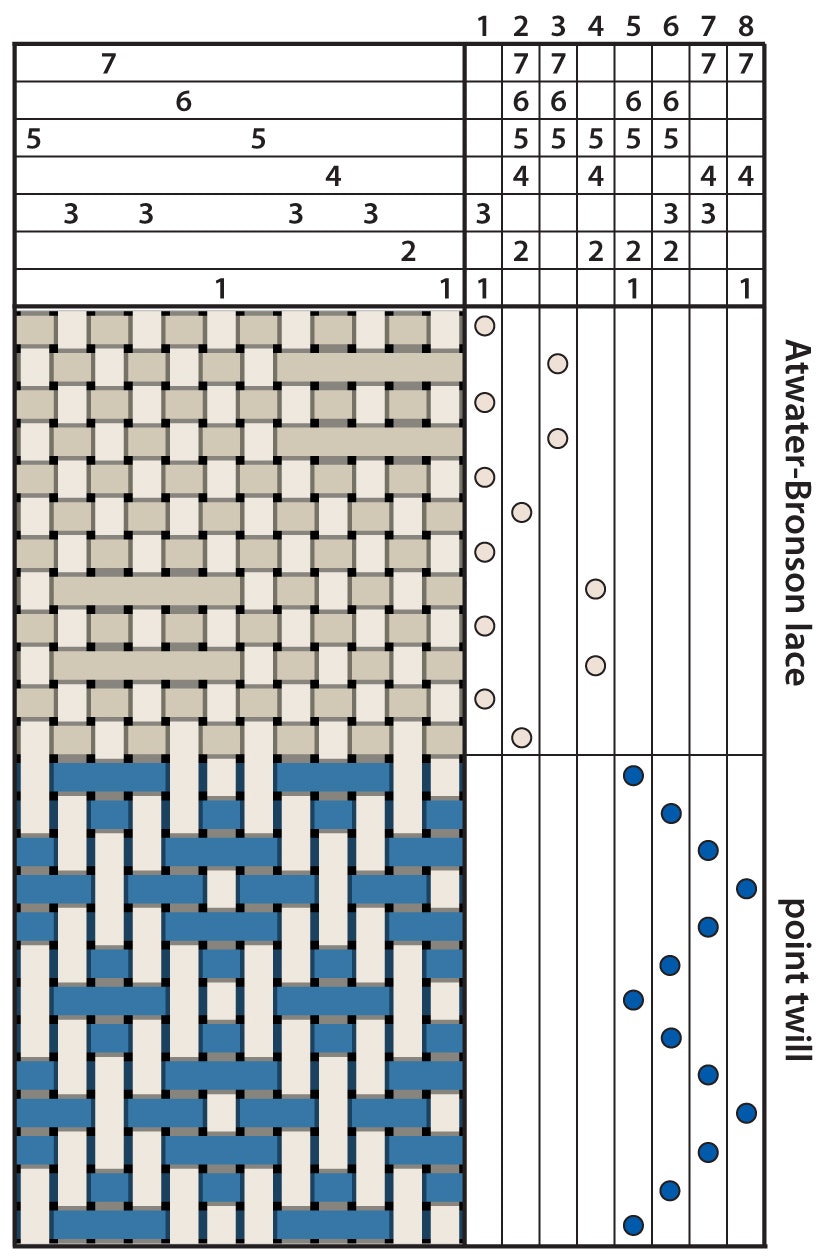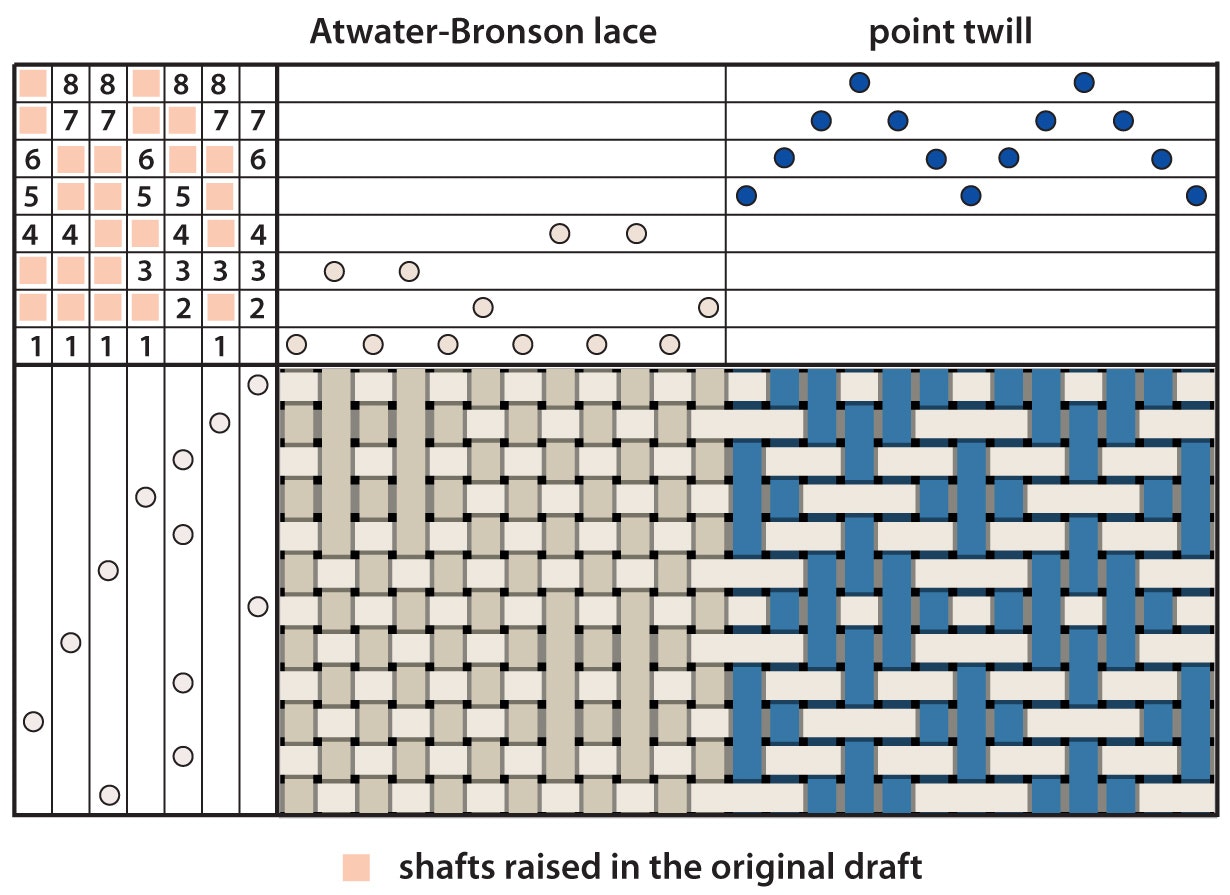Dear Madelyn,
I was very taken by your recent article, “Understanding Blended Drafts,” in the latest Handwoven (May/June 2020, pp. 18–19). I understood the explanation that resulted in the same threading producing two different structures in the same cloth, first one on top, and then the other below it. My question is: How do I produce two different structures side-by-side in the same cloth?
—Jill
Hi Jill!
Usually, when you want to weave two structures side by side, the first step is to thread each one on a separate set of shafts (in the blended-draft article, four for the Atwater Bronson lace and four for the twill). Then, using the process of fabric analysis, create the tie-up and treadling order that it would take to make the intelacements needed by each weave. (If there is any shaft in both threadings that always does the same thing, the threading can be reduced by placing those threads on the same shaft. That is not true for Atwater-Bronson lace and point twill.) I used this process to derive the draft in Figure 1. Note that problems can occur with drafts woven side by side: They might not take the same weft number, size, or color. This is not a problem with lace and twill. The warp in the twill section may need to be sleyed more closely than in the lace section, however.

Figure 1
When I looked back at the blended draft in the article (shown here in Figure 2), I noticed that the treadling order for Atwater Bronson lace in the blended draft is the same as the original lace threading order, and this is also true for the treadling order for point twill; see the treadling in Figure 2.

Figure 2
That meant that if I turned that draft ninety degrees, as in Figure 3, the two drafts are thereby woven side by side. (Note that to turn a draft, the tie-up must be changed to raise the shafts that were down and leave down the shafts that were raised).

Figure 3
And then I noticed that if the draft in Figure 1 is turned ninety degrees, the threading (the former treadling) is the same as the blended-draft threading created in the article (Figure 2). Another way, therefore, to create a blended threading draft may be to thread the two weaves side by side, derive the tie-up and treadling needed to weave them, and then turn the resulting draft. (Thinking about this makes my head hurt!)
—Madelyn

